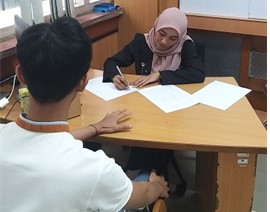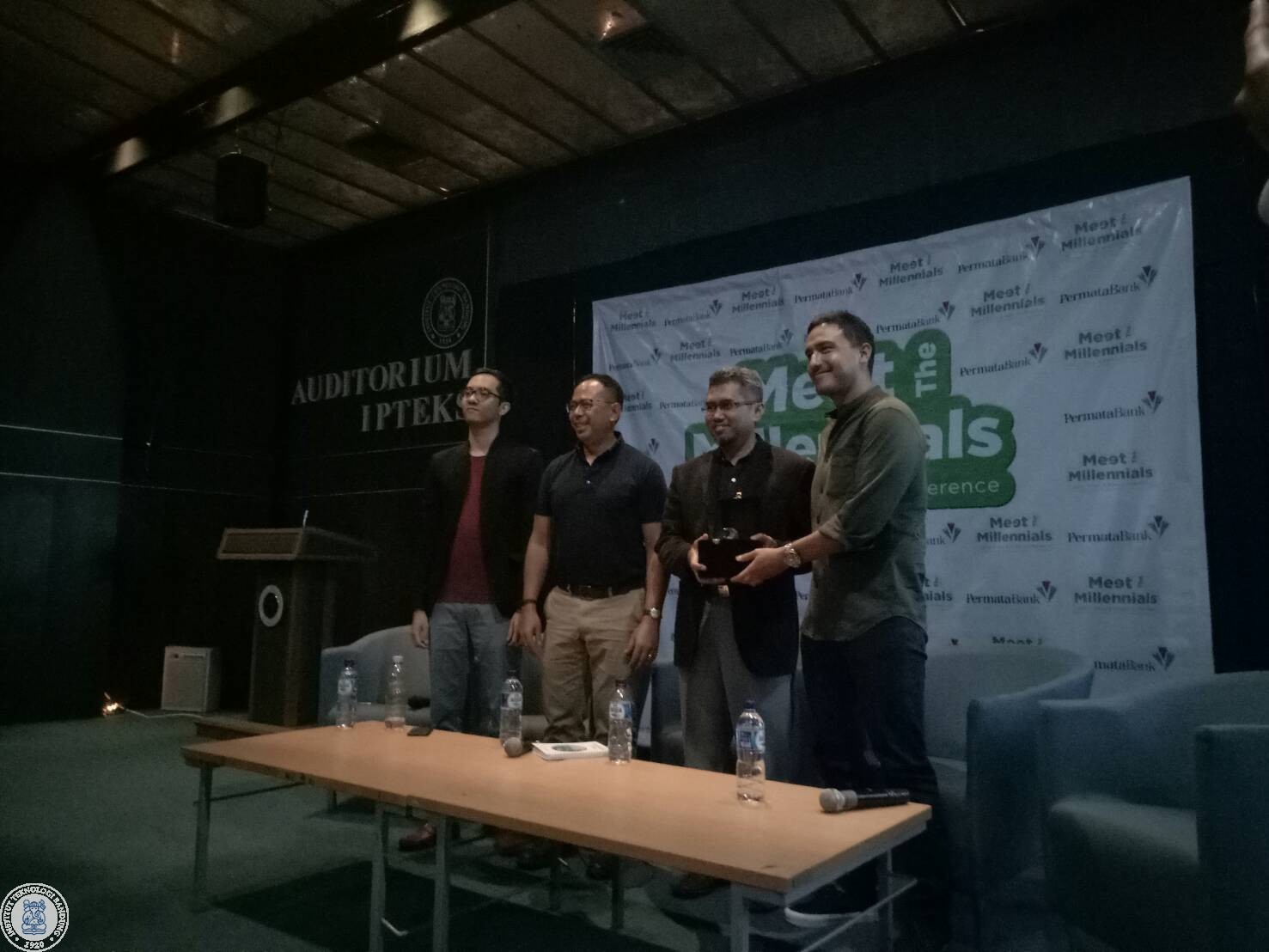ITB Students Gave a Thought on Jakarta's Spatial Planning
By Medhira Handinidevi
Editor Medhira Handinidevi

 BANDUNG, itb.ac.id - ITB's team has gone through the selection for the second phase of Green Metropolis Jakarta 2050 Contest. Last January, they were announced to be in to the top 10 teams that passed the first phase, which is the competition on conceptual plan for jakarta-Bogor-Depok-Tangerang-Bekasi-Puncak-Cinajur (Jabodetabekpunjur). The team, consisted of students from multiple major has successfully defeated their competitors coming from professionals in architect and urban planning. They have secured their position along with other teams from a noted institutions, such as Lembaga Ilmu Pengetahuan Indonesia (LIPI).
BANDUNG, itb.ac.id - ITB's team has gone through the selection for the second phase of Green Metropolis Jakarta 2050 Contest. Last January, they were announced to be in to the top 10 teams that passed the first phase, which is the competition on conceptual plan for jakarta-Bogor-Depok-Tangerang-Bekasi-Puncak-Cinajur (Jabodetabekpunjur). The team, consisted of students from multiple major has successfully defeated their competitors coming from professionals in architect and urban planning. They have secured their position along with other teams from a noted institutions, such as Lembaga Ilmu Pengetahuan Indonesia (LIPI).
This contest aims to give an important inputs on the implementation of Jakarta Master Plan (Rencana Tata Ruang Wilayah Provinsi DKI Jakarta) and Jabodetabekpunjur spatial planning. Conducted by Public Works and DKI Jakarta municipal, this contest was one of the way to boost citizen participation in the making of the city's spatial planning. Furthermore, this moment was to become an incubator of brilliant and innovative ideas on the city's sustainable development that was among the strategic issues in Indonesia and around the world.
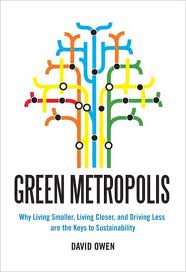 Green Metropolis
Green Metropolis
The concept in this contest refered to David Owen's (2009) green metropolis concept. He described green maetropolis as an urban area with high-density, less energy, less usage of private cars, eco-friendly buildings and a sufficient green open space. Hopefully, this concept became a benchmark on the comprehensive approach to handle urban problems in big cities.
Jakarta often called a metropolitan city.But surprisingly, the term metropolitan was not appropriate for Jakarta. Metropolitan refers to an urban aglomeration area, while Jakarta is a fast-growing city center that caused a domino effect on its hinterland, like Bogor, Depok, Tangerang, and other cities. Those cities was often called satellite city. Jakarta as the center in this aglomeration area was supposedly called a metropolis. The term metropolis was coming from a Greek words, "meter" means mother and "polis" means city. At the end, the green metropolis concept was created to incarnate Jakarta as a sustainable urban center that embody those green spirit.
Big Dreams for Jakarta
In this competition, ITB's team brought an idea about compact city for Jakarta. The concept was to spread citizen's mobility so that it wont be concentrated in Jakarta. To make it happened, Jakarta's satellite city must have their own role so that the trip attraction not only focused to Jakarta. With the green metropolis concept, civillian mobility must be pressed to an efficient and efective level. "One of our oncerns is the high level of commuter. It caused too much mobility, from Depok, bekasi, Tangerang. Everyone wants to go to jakarta," said Prianka Adi Iradathi (Industrial Engineering '09) one of the team's member.
To fulfill their idea, ITB's team had specific analysis on six sector, transportation, energy, waste management, liquid waste management, flood, and disaster vulnerability. In every sector, there are a particular issues to be solved. In part of their solution, a special institutuion were supposedly appointed to adress the issues in Jabodetabekpunjur.
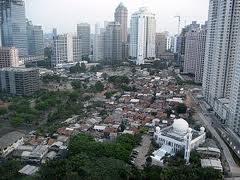
In transportation sector, their solution was to minimize citizen's mobility as much as it can be. Therefore there must be a breakthrough on mass transportation, so the citizen prefer using those mass transportation which had efficient route. The goal is to maximize the usage of mass transportation.
Apart from transportation, ITB's team also has a fresh ideas about bringing back Ciliwung river as the icon of Jakarta. "We have to make Jakarta a water-friendly city. Jakarta was geologically located among 13 river banks, therefore we must teach our citizen to love our river," said Naufal Rospriandana (Geological Engineering '08). By fixing ur citizen mindset about river, hopefully the true function of river as the source of drinking water and transportation way can be restored. "Infrastructure development will never be useful without the effort to smarten the citizen," said naufal.
When interviewed by Kantor Berita, the team recounted their dreams about Jakarta. "It (jakarta) was not supposed to be a place for rich people with luxurious cars, but it must be a place where people happily use pedestrian way or mass transportation instead," claimed Prianka. Naufal also explained, "We (citizen) were not an object of government's plan. The government as policy maker should involve citizen in the process of making the decision."
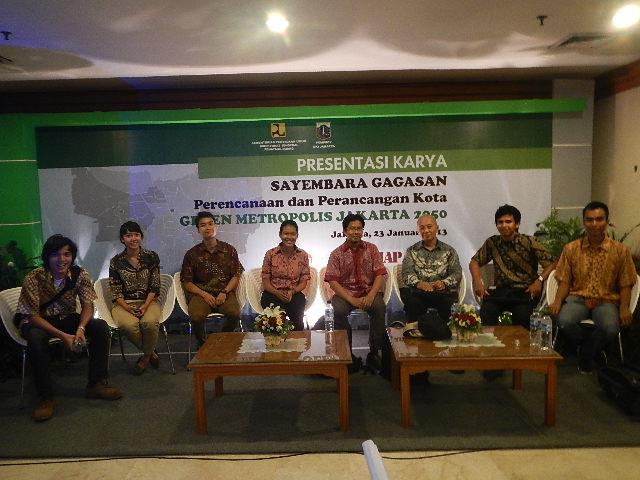 Team's Profile
Team's Profile
Led by Ganesha Mangkoesoebroto (Architecture '08), this team consisted of 7 members. Aranti Adriarani (Environtment Engingeering '09), Prianka Adi Iradati (Industrial Engineering '09), Adhamaski Pangeran (Urban and Regional Planning '08), Naufal Rospriadaa (Geological Engineering '08), Aliftama (Geological Engineering '08), Taufik Nur Cahyo (Geological Engineering '08) and Zuhdi Allam (Architecture '06) were the member of the team that sucessfully beat other 78 competitors. Although only consisted of undergraduate students, this youngest team has managed to stole judges attention which were consisted of professionals in urban planning, architecture, and transportation.
 Green Metropolis
Green MetropolisThe concept in this contest refered to David Owen's (2009) green metropolis concept. He described green maetropolis as an urban area with high-density, less energy, less usage of private cars, eco-friendly buildings and a sufficient green open space. Hopefully, this concept became a benchmark on the comprehensive approach to handle urban problems in big cities.
Jakarta often called a metropolitan city.But surprisingly, the term metropolitan was not appropriate for Jakarta. Metropolitan refers to an urban aglomeration area, while Jakarta is a fast-growing city center that caused a domino effect on its hinterland, like Bogor, Depok, Tangerang, and other cities. Those cities was often called satellite city. Jakarta as the center in this aglomeration area was supposedly called a metropolis. The term metropolis was coming from a Greek words, "meter" means mother and "polis" means city. At the end, the green metropolis concept was created to incarnate Jakarta as a sustainable urban center that embody those green spirit.
Big Dreams for Jakarta
In this competition, ITB's team brought an idea about compact city for Jakarta. The concept was to spread citizen's mobility so that it wont be concentrated in Jakarta. To make it happened, Jakarta's satellite city must have their own role so that the trip attraction not only focused to Jakarta. With the green metropolis concept, civillian mobility must be pressed to an efficient and efective level. "One of our oncerns is the high level of commuter. It caused too much mobility, from Depok, bekasi, Tangerang. Everyone wants to go to jakarta," said Prianka Adi Iradathi (Industrial Engineering '09) one of the team's member.
To fulfill their idea, ITB's team had specific analysis on six sector, transportation, energy, waste management, liquid waste management, flood, and disaster vulnerability. In every sector, there are a particular issues to be solved. In part of their solution, a special institutuion were supposedly appointed to adress the issues in Jabodetabekpunjur.

In transportation sector, their solution was to minimize citizen's mobility as much as it can be. Therefore there must be a breakthrough on mass transportation, so the citizen prefer using those mass transportation which had efficient route. The goal is to maximize the usage of mass transportation.
Apart from transportation, ITB's team also has a fresh ideas about bringing back Ciliwung river as the icon of Jakarta. "We have to make Jakarta a water-friendly city. Jakarta was geologically located among 13 river banks, therefore we must teach our citizen to love our river," said Naufal Rospriandana (Geological Engineering '08). By fixing ur citizen mindset about river, hopefully the true function of river as the source of drinking water and transportation way can be restored. "Infrastructure development will never be useful without the effort to smarten the citizen," said naufal.
When interviewed by Kantor Berita, the team recounted their dreams about Jakarta. "It (jakarta) was not supposed to be a place for rich people with luxurious cars, but it must be a place where people happily use pedestrian way or mass transportation instead," claimed Prianka. Naufal also explained, "We (citizen) were not an object of government's plan. The government as policy maker should involve citizen in the process of making the decision."
 Team's Profile
Team's ProfileLed by Ganesha Mangkoesoebroto (Architecture '08), this team consisted of 7 members. Aranti Adriarani (Environtment Engingeering '09), Prianka Adi Iradati (Industrial Engineering '09), Adhamaski Pangeran (Urban and Regional Planning '08), Naufal Rospriadaa (Geological Engineering '08), Aliftama (Geological Engineering '08), Taufik Nur Cahyo (Geological Engineering '08) and Zuhdi Allam (Architecture '06) were the member of the team that sucessfully beat other 78 competitors. Although only consisted of undergraduate students, this youngest team has managed to stole judges attention which were consisted of professionals in urban planning, architecture, and transportation.

.jpg)
.jpg)
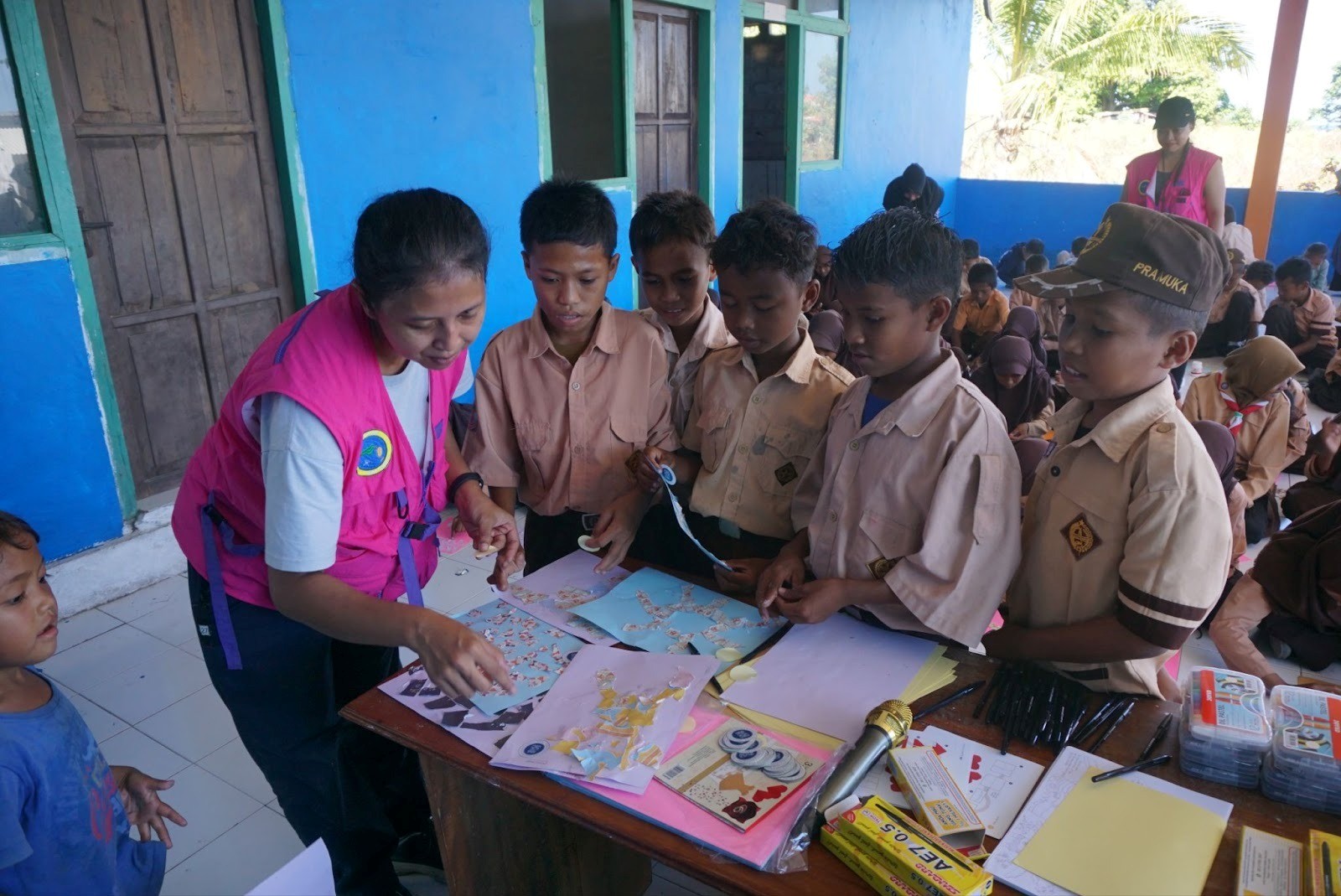

.jpg)

